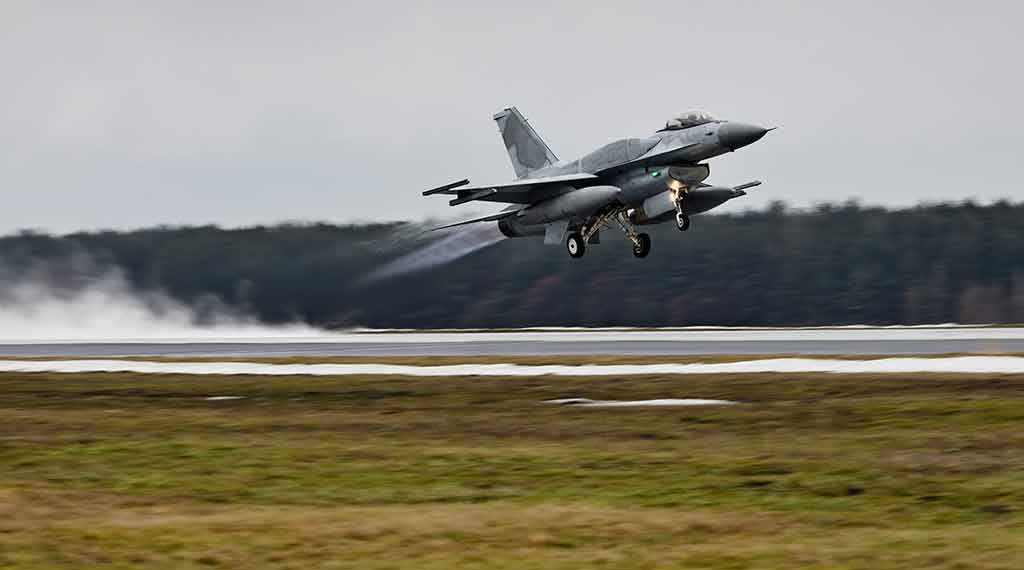
Ukrainian President Volodymyr Zelenskyy announced that his country would be ready to carry out its planned counteroffensive with or without an influx of American F-16 fighter jets.
The president told Scandinavian media that he would not elaborate on details regarding the counterattack but revealed that Ukrainian forces were “on our way” to achieve enough armaments to perpetuate a successful operation.
Ukrainian military officials have repeatedly requested the shipment of these fourth-generation platforms to aid its defensive efforts against Russia.
However, the White House has denied delivering F-16 fighters arguing that “modern warplanes are not needed for the current fight.”
Even though Poland and Slovakia have announced plans to supply Ukraine with roughly one dozen MiG-29s, the Biden administration appears resistant to mirroring this effort.
F-16: Specs and capabilities
The F-16 “Fighting Falcon” has remained a mainstay of the U.S. Air Force since its introduction to service in the late 1970s.
Derived from the Lightweight Fighter program, the F-16 was intended to fulfill the military’s need for an air superiority fighter.
This multi-role fighter has a successful track record of performing air-to-air combat and air-to-surface attack capabilities. Perhaps more pertinent is the Fighting Falcon’s combat radius, the fighter can fly for longer than all of its enemy near-peers.
Additionally, the all-weather jet can locate low flying airframes in radar ground clutter.
As detailed by the Air Force, “Avionics systems include a highly accurate enhanced global positioning and inertial navigation systems, or EGI, in which computers provide steering information to the pilot. The plane has UHF and VHF radios plus an instrument landing system. It also has a warning system and modular countermeasure pods to be used against airborne or surface electronic threats. The fuselage has space for additional avionics systems.”
Arguments for sending over F-16s
Proponents of sending over the F-16 to Ukraine point to the fighter’s versatility, popularity and modern capabilities to defend this course of action.
Since the Fighting Falcon is one of the most commonly used fighter platforms on the planet, the supply chain for supporting and maintaining these jets are strong.
According to the Ukrainian Air Force spokesperson Yuriy Inhat, Kyiv already has the necessary infrastructure prepared for the deployment and operation of Western fighters like the Falcon. Other Ukrainian leaders claim that its pilots could learn to fly the F-16 platform in a span of just six months.
Logistically, Ukraine is at a disadvantage to Russia regarding fighter platforms. Soviet-era MiG-29s cannot counter more modern fighters, which Moscow purports to possess.
Without an influx of sophisticated jets like the F-16, some analysts believe Ukraine won’t have the offensive edge needed to secure its long-term sovereignty in this ongoing invasion.
Arguments against sending over F-16s
Critics of a potential F-16 shipment cite that classic airpower had been largely absent from the battlefield over the last fourteen-plus months of warfare. Also considering Moscow’s lethal fifth-generation SAM threat, the arrival of fourth-generation fighters like the Fighting Falcon would be meaningless. As outlined in a recent House Armed Services Committee meeting, Rep. Adam Smith said the F-16 is “not the right system” to send to Ukraine because it would “face of a ton of air defense.”
The Rep. added that “A fourth-generation fighter in this particular fight is going to struggle to survive.” Some analysts also worry about the cost of sending additional equipment to Ukraine amidst escalating tensions with China. The more weapons sent to Kyiv correlate to a smaller stockpile needed in case kinetic conflict erupts with Beijing.
As warfare intensifies in Ukraine, whether to send over fourth-generation fighters like the F-16 Fighting Falcon will continue to be debated.
- US Stands Up New Drone Strike Force in the Middle East - December 9, 2025
- Has Russia Finally Sold its Su-35s to Iran? - December 2, 2025
- Iran’s Growing Missile Arsenal Is a Challenge for Israel - November 18, 2025
